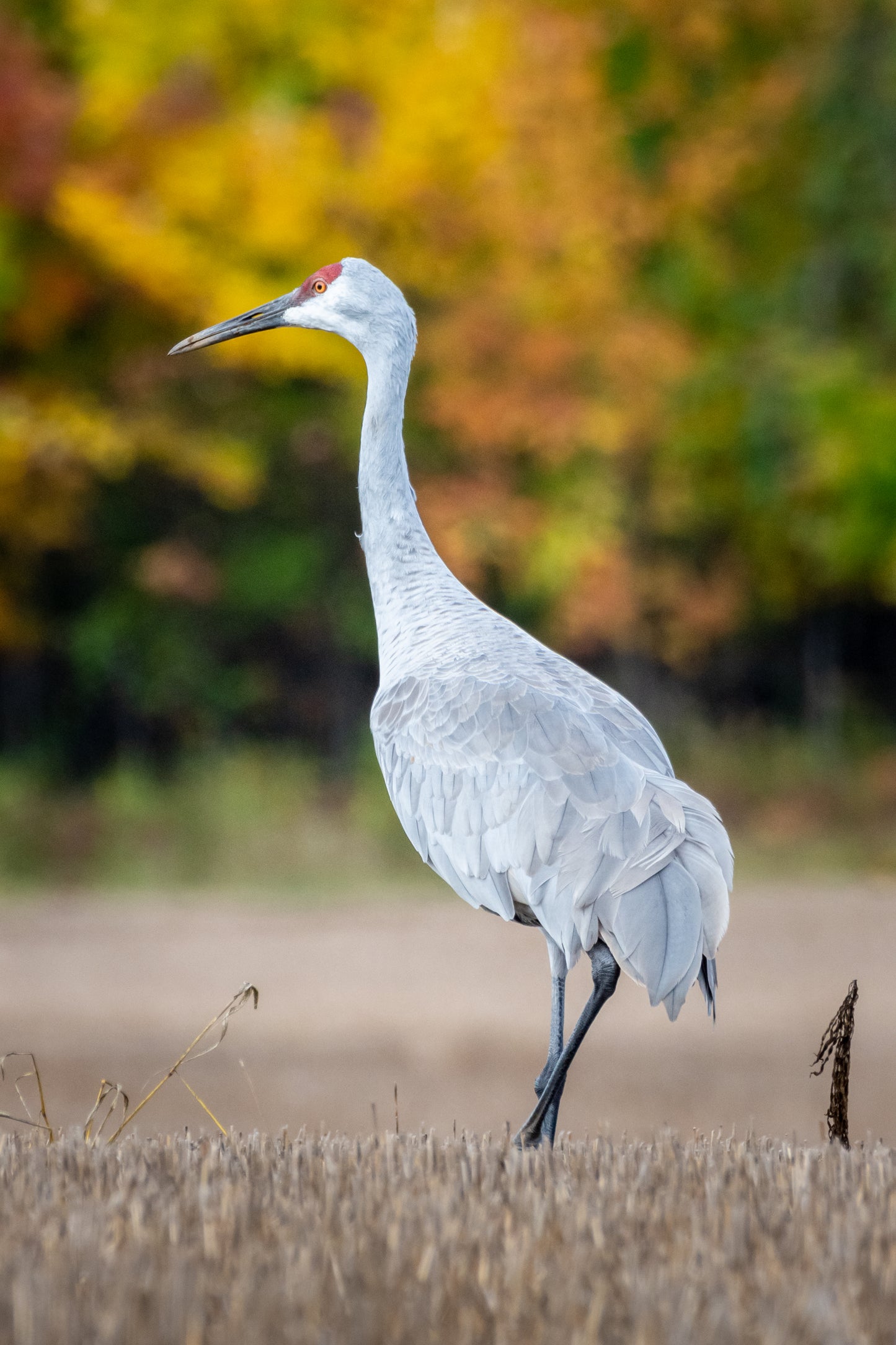The Crane Stands Alone
The Crane Stands Alone
Couldn't load pickup availability
A lone figure stands tall in the golden fields of Door County, an ancient sentinel against the backdrop of autumn’s fiery embrace. Its poised elegance is timeless, its soft gray plumage a whisper of mist over the land. The Sandhill Crane is a creature of patience and grace, moving as if the very wind bends to its will. Yet beneath this serene exterior lies a voice that seems plucked from prehistory—an echo of an age when giants roamed.
Door County’s marshes, wetlands, and quiet meadows serve as seasonal homes for these prehistoric wanderers. They arrive in spring, nesting in the secluded edges of flooded fields and reedy shallows, where their gangly chicks, called colts, stumble into the world. As summer fades, they gather in great numbers, staging for their long migration south. Some will travel thousands of miles to wintering grounds in Florida and beyond, their rolling cries filling the sky like a scene straight out of Jurassic Park.
And if you've ever heard their call—an eerie, trumpeting rattle that reverberates across the landscape—you might just expect to see something with scales instead of feathers stepping out of the mist. Even the filmmakers of Jurassic Park used the call of a Sandhill Crane to help bring their dinosaurs to life. Life, uh... finds a way, and so do these birds, returning to Wisconsin year after year like clockwork, an unbroken link to a time when creatures much like them ruled the earth.
In fact, Sandhill Cranes are some of the oldest living bird species, with fossils dating back over 2.5 million years. To put that in perspective, these birds have been strutting through wetlands since before humans had even figured out how to make fire. Clever girl. Their territorial nature, especially during nesting season, is something to behold—though thankfully, they don't hunt in packs. A crane defending its nest can unleash a swift, raptor-like kick with legs built for wading, fighting, and, if necessary, making sure an unsuspecting intruder learns a very quick lesson.
Despite their ancient lineage, Sandhill Cranes are incredibly adaptable. Their diet is as varied as a velociraptor’s, including grains, insects, amphibians, and even small mammals. They are opportunistic feeders, thriving in marshes, farmland, and even suburban areas. While their populations once declined due to habitat loss, conservation efforts have brought them back in strong numbers. In Door County, they are a familiar sight, whether standing in solitary elegance or moving in flocks that echo with calls reminiscent of an ancient world.
So next time you hear their trumpeting cry rolling across the landscape, don’t be surprised if it sends a shiver down your spine. It’s the sound of something primeval, a voice from an era when the world belonged to the dinosaurs. And while there may not be a T. rex lurking in the trees, with a Sandhill Crane nearby, you’ll never be entirely sure.
All prints are of museum quality and printed in The USA. Canvas Prints are wrapped around a hardwood frame to prevent long-term wrapping and utilize a 0.75" thick wrap. Metal Prints are glossy, vibrant, and of course are ready to hang. These prints make a statement and bring Door County home to your wall.
Share


